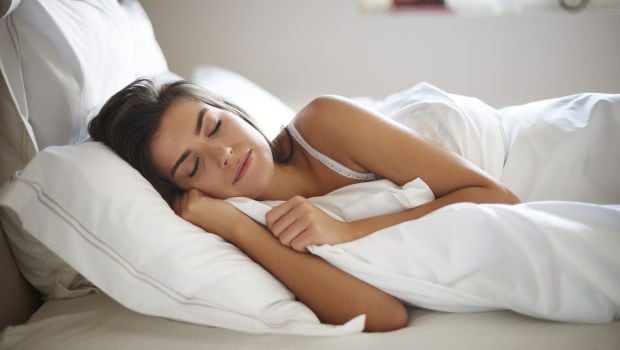Obstructive sleep apnoea guide
Obstructive sleep apnoea
What is it?
Obstructive sleep apnoea (OSA) is a sleep disorder caused due to the obstruction in the upper airway. It is one of the most common problems people experience in their daily life. It is characterised by the pauses in the breathing process during sleep. In obstructive sleep apnoea, a physical block in the airway interrupts breathing, despite the efforts to breathe normally.Most people suffering with obstructive sleep apnoea do not feel the need to get the problem treated due to poor awareness. The term obstructive sleep apnoea is repeatedly used when it is found associated with excessive daytime sleepiness.
What are the causes?
The main cause is development of head and neck. People with bulky short necks, retrognathia, micrognathia, bulky palate and macroglossia are likely to suffer with the condition. A loud snoring can identify this. The aggravating factors being – obesity, use of alcohol and sleeping pills. The obstruction is mainly caused due to the extension of soft palate at the base of the tongue. There are no rigid structures in this area to hold the airway open. During the day, these muscles keep the airway wide open, but when the person with OSA falls asleep, these muscles also relax and obstruct the airway. This prevents air from getting into the lungs. Older obese men are more prone to OSA. OSA in children usually happens due to enlarged adenoids and tonsils; which are both curable. A minor surgery is required in some severe cases of apnoea otherwise; it could be treated with some preventive measures and medications. Other risk factors include: Obesity Age Male sex Alcohol use Large tongue Narrow airway Large tonsils and adenoids in children Large neck or collar size
What are the symptoms?
Obstructive sleep apnoea has various symptoms and can be identified under 2 categories:
Symptoms (during sleep)
- Snoring (usually loud)
- Gasping and choking sensation that arouse the patient from sleep
- Restless sleep
- Witnessed apnoeas that often interrupt the snoring and end with a snort.
Daytime symptoms (during awaking hours)
- Waking up feeling un-refreshed.
- Morning headaches
- Daytime sleepiness
- Poor concentration
- Memory difficulties
- Lethargy Personality changes – increased dis-stability, depression, etc.
What is the treatment?
There are number of treatment options available for OSA. The option most suitable to a patient is decided by considering the severity of your the problem and the specific cause of the problem. The goal of treatment is to keep the airway open even while sleeping, so that breathing is not obstructed.
Keeping these things in consideration, some simple measures suggested to the people having mild OSA are:
- Avoid alcohol or sedatives at bedtime
- Dental devices inserted into the mouth to keep the jaw forward at night. (Mandibular Advancement Appliance)
- Weight management
Apart from these other therapies include:
Positional therapy: Apnoea tends to be more severe if a person sleeps on the back (supine position). As in this position, the tongue falls back over the airway and obstructs the air passing through the lungs. Hence, not sleeping on the back may help mild apnoea patients. Some special kind of cushion and pillows are also available these days, which are specially designed to prevent the spine sleeping.
Weight loss: Sleep apnoea is related to one’s weight too. Excess fat around the neck can make the airway narrower and may increase the chances of obstruction. Losing weight can help treat sleep apnoea at least its mild form. It may also help reduce the severity of the apnoea.
Avoid alcohol: Avoid alcohol and medications that act as a central nervous system (CNS) depressant like painkillers or sedatives. They can worsen the sleep apnoea condition by relaxing the airway further or by reducing respiratory drive. Hence, it is important take into consideration that the medications you are taking should not affect your sleep apnoea.
Oral Appliances: These are also known as dental appliances. These instruments are intended to keep the airway open in one of the three ways. First, by pushing the lower jaw forward. The device for this purpose is known as mandibular advancement devise (MAD). Second, by using tongue-retaining device. It prevents the tongue from falling back and obstructing the airway. This device holds the tongue and does not let it fall back. The third way is by combining the first two mechanisms. All these oral mechanisms help with mild obstructive sleep apnoea and in the non-obese. But, these devices can be used in moderate and severe sleep apnoea cases as well.
Surgery: There are various surgical methods available to treat the problem. Surgery creates a more open airway, which is less likely to obstruct and it is also a kind of permanent solution to the problem of sleep apnoea. Each surgery type has different efficacy rates and at times, these surgeries worsen the sleep apnoea.
Continuous positive airway pressure (CPAP): The continuous positive airway pressure works by passing the pressurised air through the airway in a gentle way through but with high pressure. The amount of air passed through the airway should be sufficient to keep the airway and throat open. The pressure of the airway is set according to the need of the patient. However, it should be fixed at such point that it should eliminate the problem of apnoea. It is one of the most effective procedures to treat sleep apnoea. However, if the pressure of the air is kept low than the required one, the procedure will not prove effective.
What is the prognosis?
Untreated sleep apnoea can increase the risk for cardiovascular disease, high blood pressure, stroke, diabetes, weight gain and obesity or it can also result in a congestive heart failure. When a person gets high blood pressure due to obstructive sleep apnoea, then the readings do not drop significantly when the patient is sleeping. Obstructive sleep apnoea sufferers also have a 30% higher risk of heart attack and death. It causes various hormonal changes in the body. These changes coupled with low oxygen saturation level of the blood can cause damage to the body over time.
Obstructive sleep apnoea News More News
- Sleep Problems Might Lead To Hypertension In Women
- Sleep Disorders In Women Strongly Linked To Infertility Risk
- Restless Sleep May Signal Parkinson's Disease: Study
- Excess sleep and stroke risk in women
- Parents affected by child's sleep disturbances
- Sleep disorders lead to depression
- Sleep apnoea can hamper driving
- Insomnia neglected among adults
- Sleep disorders increase blood pressure
Obstructive sleep apnoea Health Photos More Photos
................... Advertisement ...................
................... Advertisement ...................
................... Advertisement ...................
................... Advertisement ...................

























